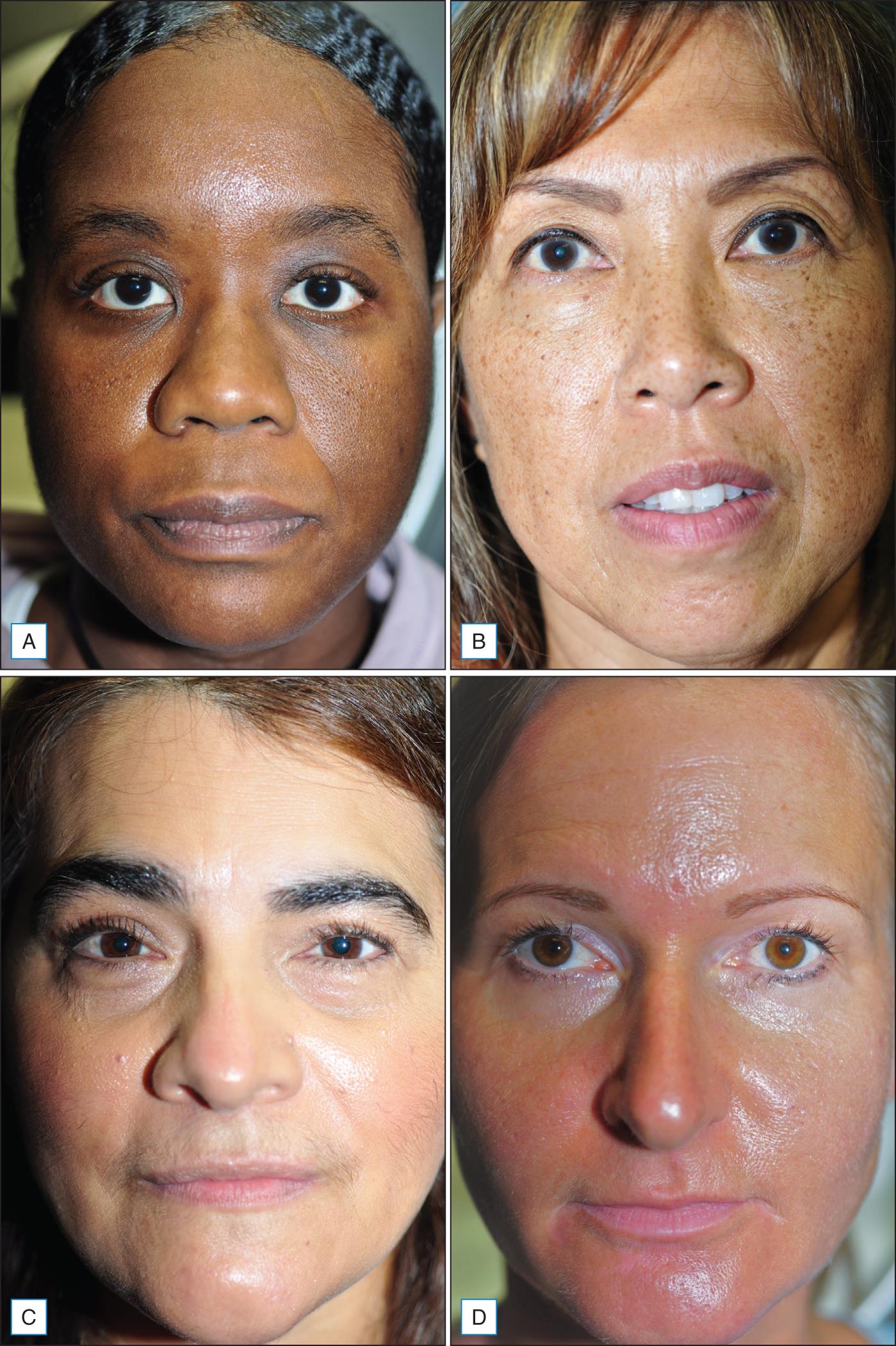Physical Address
304 North Cardinal St.
Dorchester Center, MA 02124
Botulinum toxin is a safe and effective procedure in darker skin types.
In general, efficacy and safety profiles are similar to lighter skin types.
With appropriate use, side effects are uncommon.
Commonly treated areas are glabellar, horizontal forehead and periocular lines.
Demographic trends coupled with the increased availability of minimally invasive treatment options have resulted in an increasingly diverse patient population in the aesthetic arena. According to the International Society of Aesthetic Plastic Surgery, botulinum toxin led as the most popular nonsurgical cosmetic procedure and top overall cosmetic procedure performed worldwide in 2019. The United States accounted for the majority (20.8%) of the 6,271,488 botulinum toxin procedures, followed by Brazil (8.1%), Germany (6.1%), Japan (5.4%), Italy (5%), Mexico (4.6%), Turkey (3.2%), France (2.6%), Greece (1.5%), and Argentina (1.2%). In the United States specifically, the American Society of Aesthetic Plastic Surgery reported that 30% of the 16,349,031 nonsurgical cosmetic procedures performed in 2019 were performed on racial or ethnic minorities, with botulinum toxin remaining as the most frequent nonsurgical cosmetic procedure in African Americans, Hispanics and Asian Americans. As non-white racial and ethnic groups form a rapidly growing segment of the population, the rise of cosmetic procedures in minorities is only expected to continue to grow. As such, understanding racial or ethnic variations in safety, efficacy, and approaches to treatment is of increasing importance to the aesthetic physician.
Facial rhytides are a common concern across the racial and ethnic spectrum. However, variations in severity, age of onset, and cultural impact can be seen in different populations. In general, as the studies by Hexsel and Brunetto and Rossi and Alexis reported, individuals with richly pigmented skin (i.e., Fitzpatrick skin types IV to VI) demonstrate signs of photoaging, including rhytides, at a later age than do individuals with fair skin (Fitzpatrick skin types I to III). When comparing race/ethnicity, African-Americans demonstrate later onset and less severe signs of photoaging than whites. This is largely due to the photoprotective effect of increased epidermal melanin, which has been demonstrated in several studies. Most notably, the mean protective factor from ultraviolet (UV) B in black skin was found to be 13.4 versus 3.4 for white skin in a cadaveric skin study by Kaidbey et al. Furthermore, in a more recent study by Yamaguchi and co-workers, UV-induced apoptosis was found to be greater in the epidermis of black skin compared with white skin, suggesting that photodamaged cells may be removed more efficiently in darker phototypes.
In general, signs of facial aging in darker skin occur 10 to 20 years later than in whites. In a comparative study by Nouveau-Richard et al. of Chinese and French women, the onset of facial wrinkles was found to be approximately 10 years later in Chinese versus French women. In a multinational survey study by Alexis et al., most Asian and Hispanic women did not report moderate/severe facial aging until 50 to 69 years, as compared to 40 to 59 years in Caucasians and 60 to 79 years in African American women. Another study by Grimes found a much lower percentage of women of color perceived having wrinkles than their white counterparts.
Loss of volume in the midface and prominent tear troughs have been reported to be more striking features of aging in African Americans. Perioral rhytides are uncommon in darker skin types, and therefore the upper face is the primary site of facial rhytides in patients with skin of color ( Fig. 24.1 ). Photoaging differences in Hispanics and Latinos are less well characterized but vary considerably, given the broad range of Fitzpatrick skin types (I to VI) found in this population.

Become a Clinical Tree membership for Full access and enjoy Unlimited articles
If you are a member. Log in here